Biblia Ectypa: Bildnussen auß Heiliger Schrifft dess Alt- und Neuen Testaments […]
Biblia Ectypa: Bildnussen auß Heiliger Schrifft dess Alt- und Neuen Testaments […]
by Úna Faller
Introduction
| Title | Biblia Ectypa: Bildnussen auß Heiliger Schrifft dess Alt- und Neuen Testaments, in welchen Alle Geschichte und Erscheinungen deutlich und schrifftmäßig zu Gottes Ehre und Andächtiger Seelen erbaulicher beschauung vorgestellet werden |
|---|---|
| Contributor(s) | Christoph Weigel
Georg Christoph Eimmart Johann Jacob von Sandrart |
| Date | 1695-1787 |
| Place | Germany, Augsburg |
| Format | folio, 35 cm |
| Language(s) | German, Latin |
| Source | Münchener Digitalisierungszentrum Bibliothèque Grammont, Besançon |
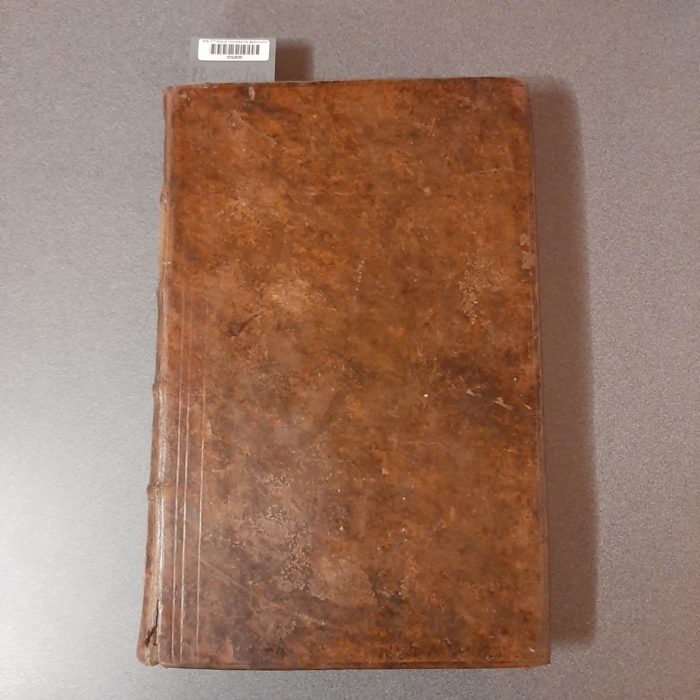
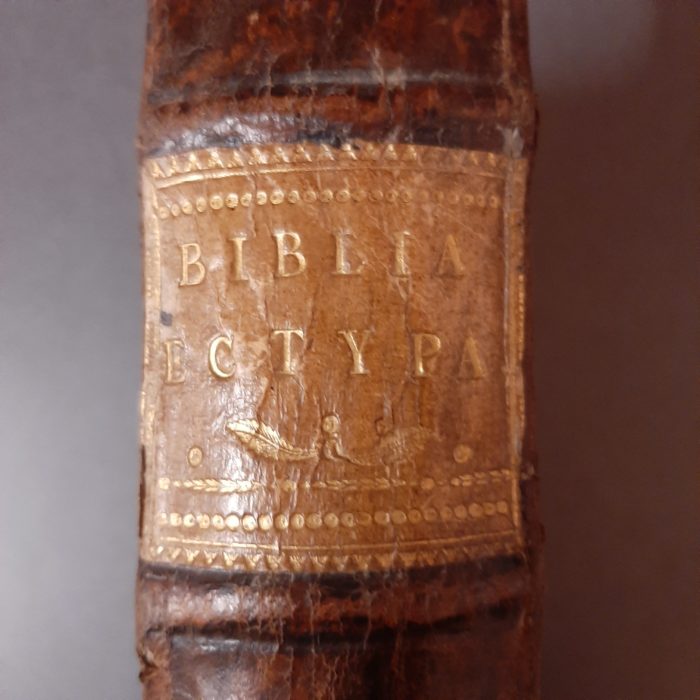
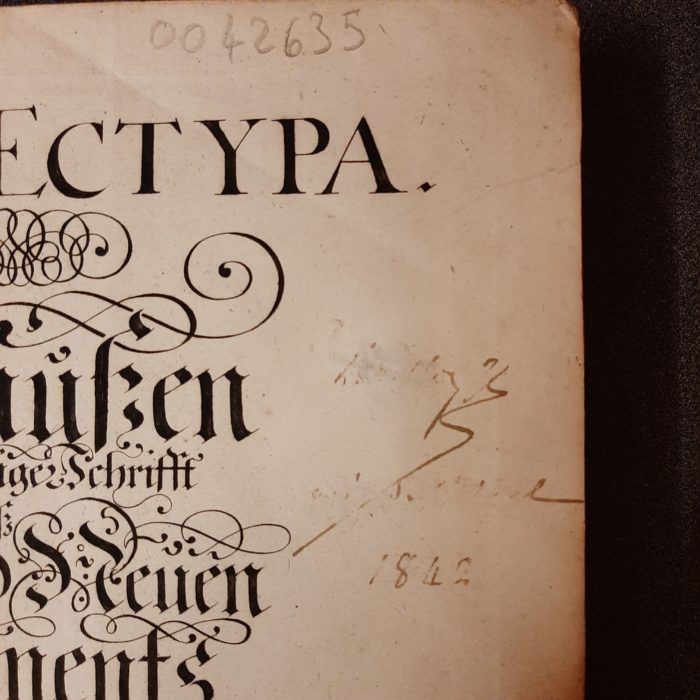
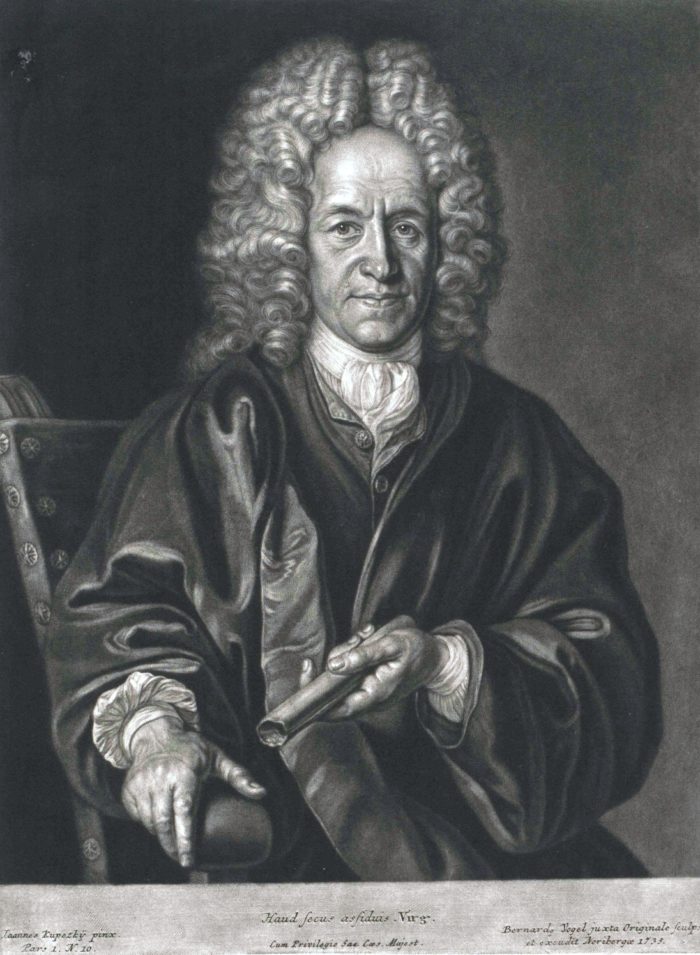
Biblia Ectypa is the work of engraver Christoph Weigel. First published in 1695, the second edition was issued almost a century later in 1787. This is a pictorial Bible, where the story of the text is told not through words but through the medium of the image. This project focuses on representations of Genesis in both editions, specifically Genesis 1, Creation.
Christoph Weigel, 1654-1725 (source)
From both title pages, we can see clearly the prominence of the engraver Christoph Weigel’s name. This prominence on the title page indicates that he was already established as a well-known engraver, as his involvement is used as a selling point. This Bible was well-received, with scholar Anke te Heesen calling it “a great success […] financially speaking”.
The example held by the Münchener Digitalisierungszentrum has a stamp “Eigenthum der Stadt Augsburg” or “Intellectual property of the city of Augsburg”. As this was the city of printing of this work, it is likely this exemplar never left its city of production. The second edition version held in Bibliothèque Grammont, Besançon has a now-illegible ex-libris that dates from 1842.
Above you can compare the two title pages with their very different Roman numerals. Separated by almost a century, there are many small and intriguing differences between the two editions. Weigel had died by 1726 which means that the second edition was published after his death. One can only wonder where the original metal block engravings were kept in the intervening decades between the two editions. Looking closely using the digitalised version and the local version held in Besançon, certain differences emerge between contrast, ink and shadows.
The first edition is on the left and the 1787 edition is on the right. This is just one example from Genesis of differences between the 2 editions.
This kind of textual investigation between iterations of the same base text allows for scholars to identify bibliographic changes over decades, as well as the art-orientated analyses that are possible by comparing the engravings.
One further difference is the content of both editions. The first edition, as digitalised by Münchener Digitalisierungszentrum contains a frontispiece, a preface and the royal privilege.
The later edition, while missing these elements, does have larger engravings placed before each folio of four engravings which relate to the Bible’s chapter.
The reader can see how Weigel chose to prioritise the image over the written text, allowing for intricate depictions of key scenes of Genesis including the Creation, Eve and Adam’s ejection from the Garden of Eden, as well as Cain killing Abel.
This Bible is unusual as copperplates were used by Weigel for the engravings, instead of the more common woodcuts used for pictorial bibles of the time. The difference between illustrated Bibles and pictorial Bibles must also be noted. Cardiff University note that an illustrated Bible refers to “text embellished by illustrations” whereas in the Weigel Bible, the image takes precedent. This allows for the reader to immerse themselves in the Biblical tale. It also gives much power to the engraver, as it is his craft which can emphasise or obscure aspects of the written word.
Another further avenue of potential research involving Biblia Ectypa is the tension between the established narrative of the written Bible and its chronological coherence and the freedom of the engraver to portray scenes according to his interpretation of the events.
Quirks of Biblia Ectypa
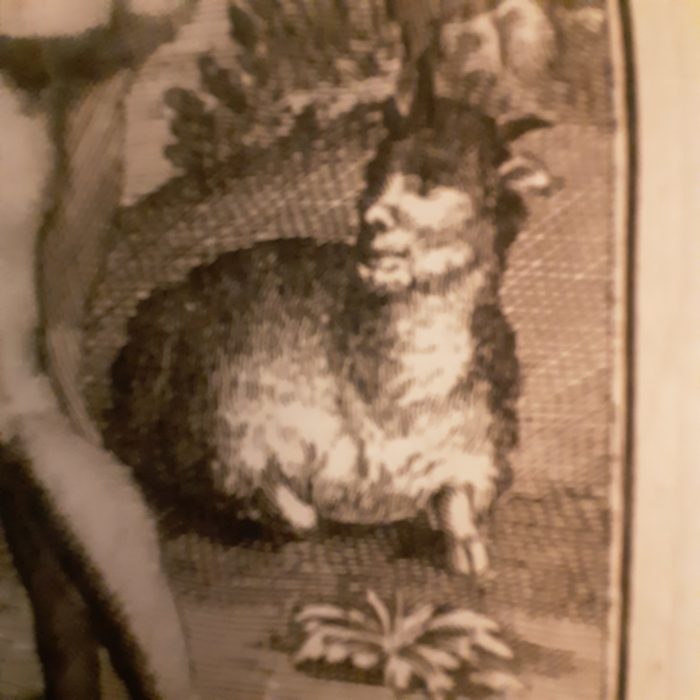
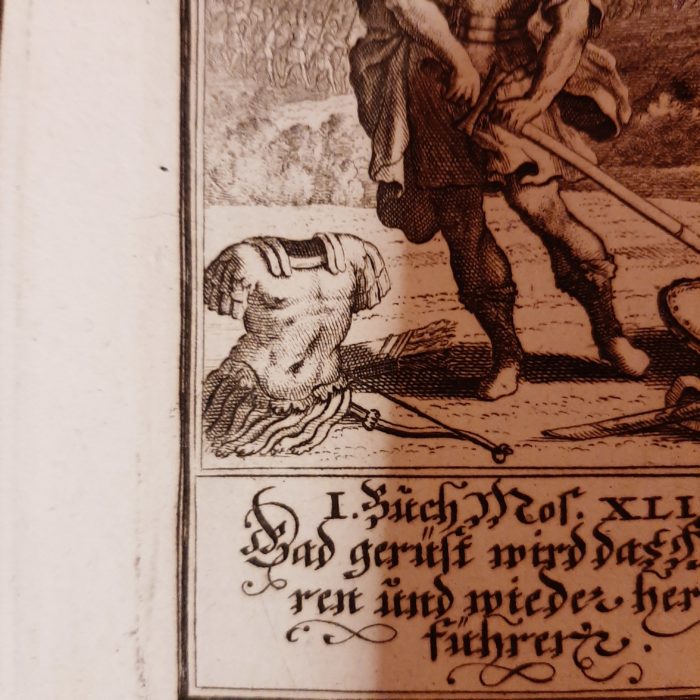
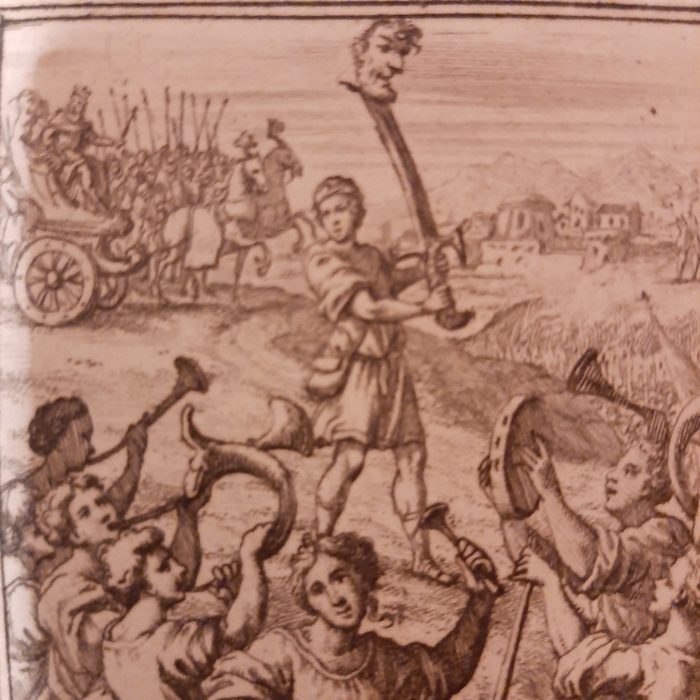
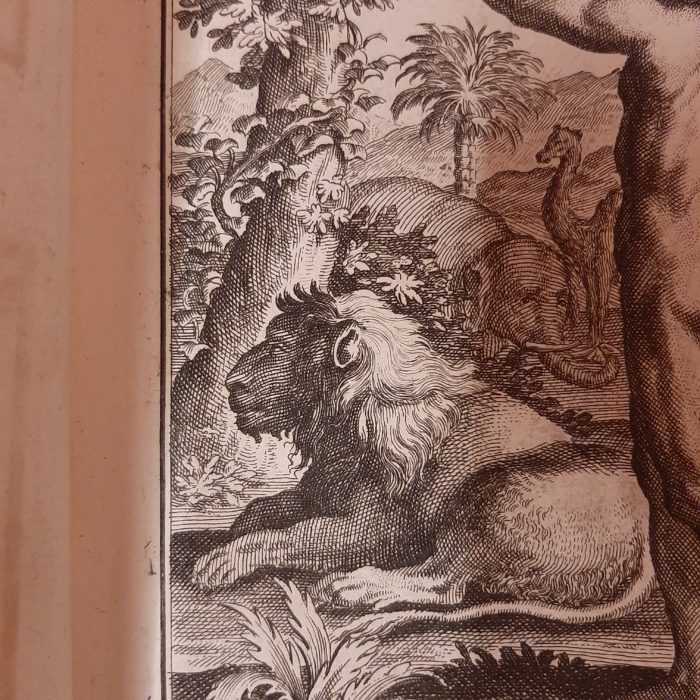
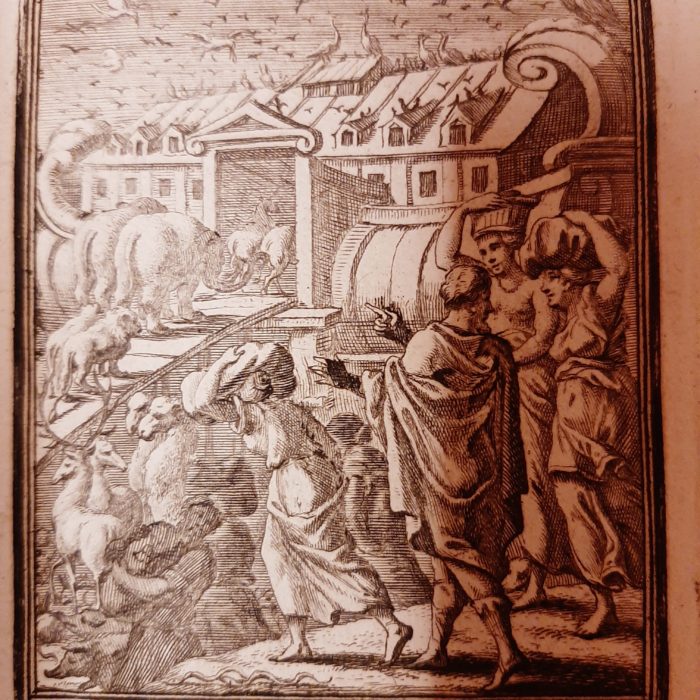
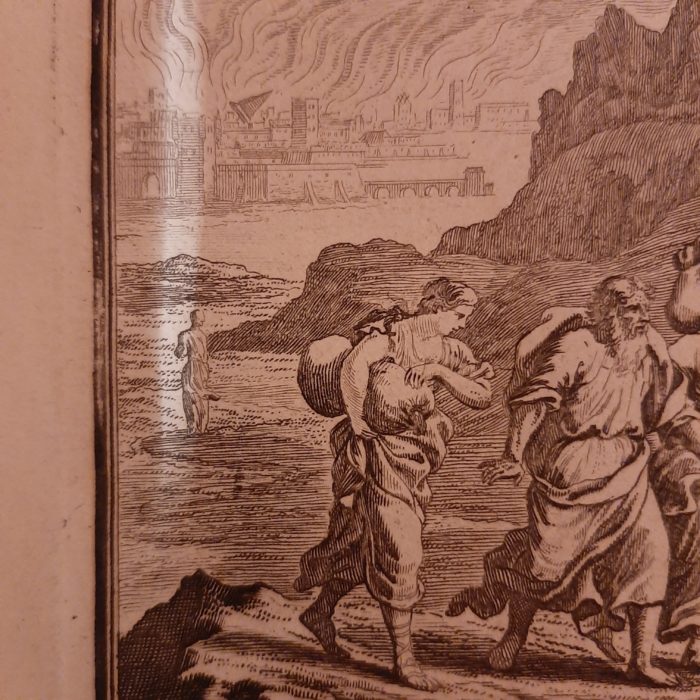
Genesis Engravings and Transcription
While the entire Weigel Bible is worth perusing for the sheer effort put into its creation, (there are over 830 individual engravings plus 2 mezzotints plates placed at the start and end of the exemplar) the engravings dedicated to Genesis are particularly interesting.
Using the open source interactive story-telling platform Twine, you can discover below the engravings from Genesis 1, which details the story of the Earth’s creation by God, which finishes with Adam and Eve forced from Eden. The Latin inscription and the German translation have both been transcribed.
It is interesting to see which passages from Genesis 1 were used by Weigel in his pictorial Bible. Six verses were chosen to illuminate the entire passage, which contains 31 verses in written Bibles. We can only wonder how these choices were made by the engraver, who must have considered not only the importance of communicating the story of the Bible to his customers but also the artistic process needed by the engravings.
Scholars are uncertain from which edition(s) Weigel took his text, with this being one potential avenue of further study. This would entail a detailed investigation into the German pictorial Bible tradition and textual bibliography.
Bibliography
Brunet, Jean-Claude. Manuel du Libraire et de l’amateur de Livres. Paris: Firmin Didot. 1864.
Gottfried, Adam. Thumb Bibles: The History of a Literary Genre. 2022
Heesen Anke te, and Hentschel Ann M. The World in a Box : the Story of an Eighteenth-Century Picture Encyclopedia. University of Chicago press, 2002.



